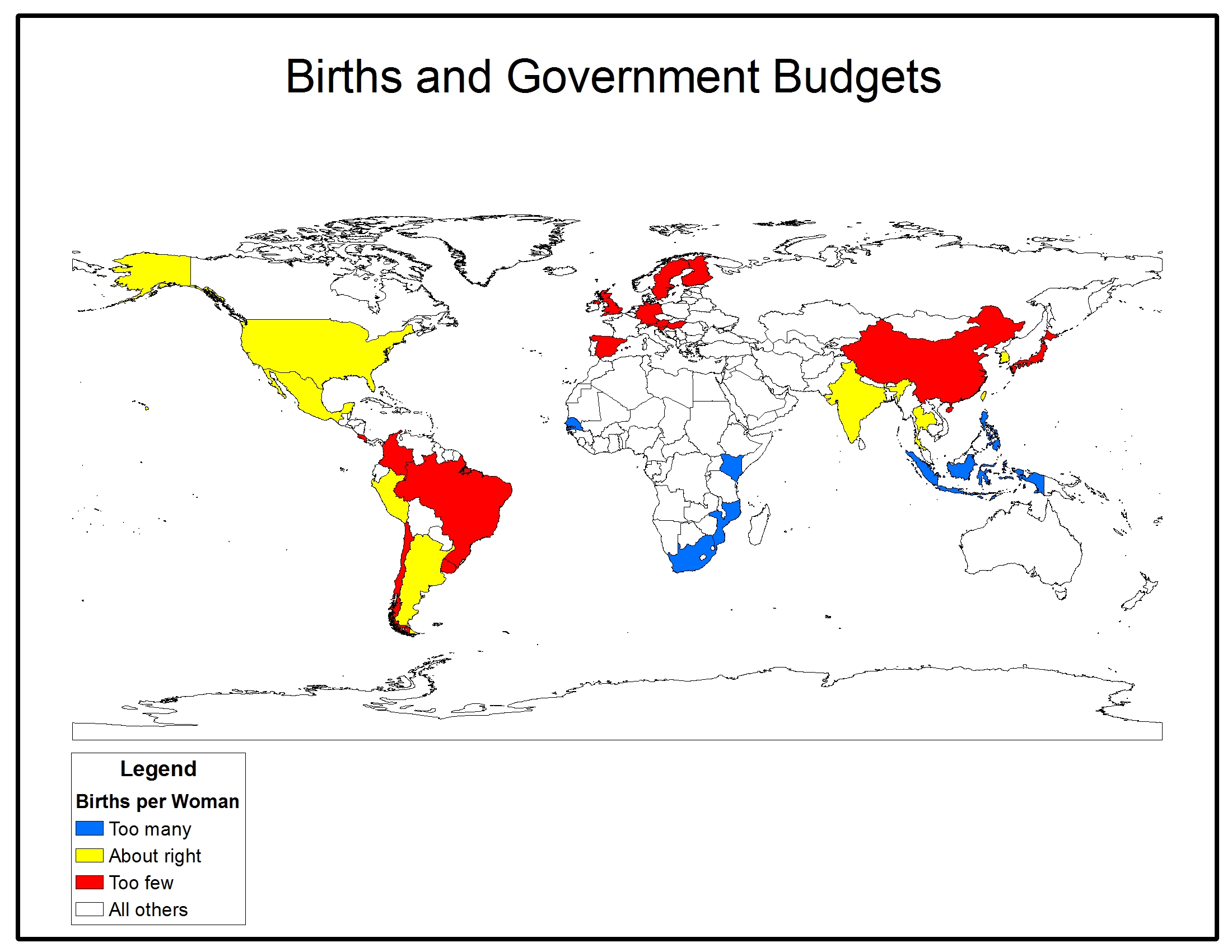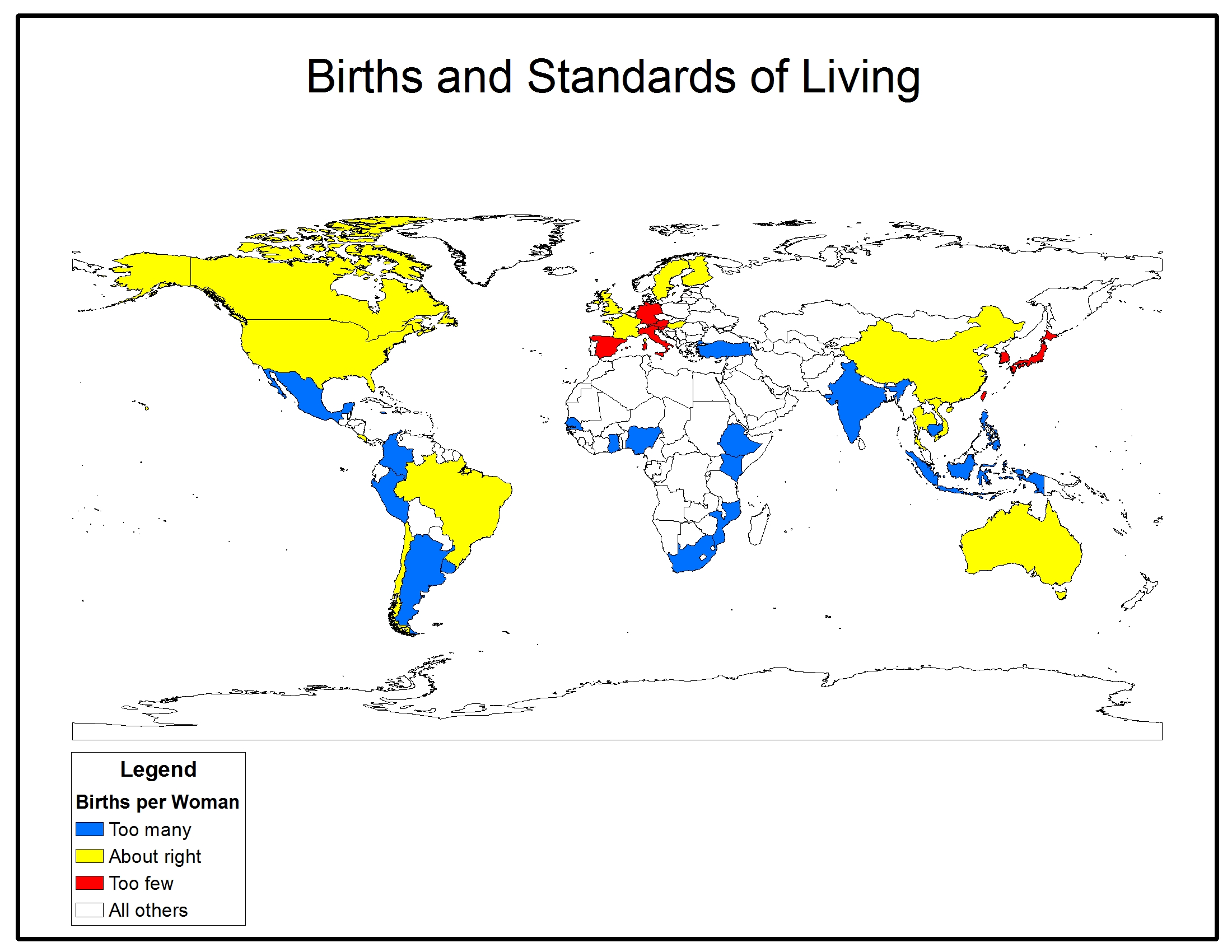Science
Ronald Lee, Andrew Mason, and members of the NTA network (2014). Is Low Fertility Really a Problem? Population Aging, Dependency, and Consumption. Science (346): 229-34. DOI: 10.1126/science.1250542.
Longer lives and fertility far below the replacement level of 2.1 births per woman are leading to rapid population aging in many countries. Many observers are concerned that aging will adversely affect public finances and standards of living. Analysis of newly available National Transfer Accounts data for 40 countries shows that fertility well above replacement would typically be most beneficial for government budgets. However, fertility near replacement would be most beneficial for standards of living when the analysis includes the effects of age structure on families as well as governments. And fertility below replacement would maximize per capita consumption when the cost of providing capital for a growing labor force is taken into account. While low fertility will indeed challenge government programs and very low fertility undermines living standards, we find that moderately low fertility and population decline favor the broader material standard of living.
Reprint: http://www.sciencemag.org/cgi/rapidpdf/346/6206/229?ijkey=kVq5TPG06Fafk&keytype=ref&siteid=sci
Full Text: http://www.sciencemag.org/cgi/content/full/346/6206/229?ijkey=kVq5TPG06Fafk&keytype=ref&siteid=sci
In many countries higher birth rates would improve public finances (Map 1) but not standards of living (Map 2).


Errata: The institutions with which Robert Gal is affiliated are located in Budapest, Hungary.
Data: Visualizing the Economic Life Cycle
Visualizing population age structure and the economy
Interactive Data Explorer
The interactive data explorer is a new tool for understanding how changes in population age structure are influencing patterns of consumption and production. Historical estimates and projections for 40 countries are provided.
On-Line Supplementary Material
NTA Data
This file contains NTA data profiles: Consumption, labor income, public transfer inflows and outflows, private transfer inflows and outflows, and taxes: NTA profiles
Programs and Input Data
input data
Data file that contains fertility data (UN variables l(x), lf(x), e(x), and population), and the NTA data (C, Yl, TGI, and TGO): Program Inputs
main program
To run the simulations of various fertility scenarios, please download the main Matlab script, OptimalFertility_S.
You execute this script in Matlab. It calls the remaining scripts and functions provided next.
scripts and functions
Before starting, please specify the directory and the filename of the Input file in the Prep_DATA_S_Module.m. Use the provided Input file as a model; worksheet names should should not be changed (for instance, 'tgi' is worksheet containing public transfer inflows).
To make the process easier, the main script (OptimalFertility_S.m) and the script in which you need to add Input data information (Prep_DATA_S_Module.m) are provided separately. Remaining scripts and functions are zipped for a single download.
Other scripts and functions Zipped
Sample Results
Results are provided for the self scenario.
Science Table Fiscal support ratios
Media Coverage of Science Article
9 October 2014: Global Study: Low Birth Rates Can Bring Surprising Economic Benefits in East-West Wire.
9 October 2014: Low Birth Rates Can Actually Pay Off in the U.S. in Science Blog.
9 October 2014: Global Study: Low Birth Rates Can Bring Surprising Economic Benefits in Huffpost Science.
9 October 2014: Low Birth Rates Pay Off - In the Short Term in Science 2.0.
9 October 2014: Low birth Rate Trends Suggest Americans Could Be Happier with Fewer Children in Medical Daily.
10 October 2014: Zu niedrige Geburtenrate in Österreich in Die Presse.
10 October 2014: Low Birth Rates Can Actually Pay Off in the U.S. and Other Countries, in HealthCanal.
10 October 2014: Having More Kids Isn't Best for Every Country in Futurity: Research News from Top Universities.
10 October 2014: Lower Birth Rates Could Help Stimulate the Economy, Says Report in City A.M.
17 October 2014: Economic Benefits of Low Birth Rates on Hawaii Pubic Radio.
30 October 2014: International Team Reveal How Low Birth Rates Can Bring Economic Benefits in Imperial College London News.
19 November 2014: Andrew Mason of East-West Center discusses global birth rates in CCTV America.
Additional Acknowledgements
The construction of NTA for each country included in the study was possible because of support provided directly to those researchers. That support is acknowledged here.
Australia, James Mahmud Rice. Support for this research was provided by a National Health and Medical Research Council and Australian Research Council Ageing Well, Ageing Productively Research Program grant (401158) and by the Australian Research Council Centre of Excellence in Population Ageing Research (CE1101029).
Austria, Alexia Fürnkranz-Prskawetz Support for this research was provided by the Austrian Science Fund (project no I 347-G16) and the European Commission through the AGENTA project (grant agreement no: 613247). Research assistance was provided by Bernhard Hammer.
Colombia, Urdinola, B.Piedad & Tovar, Jorge Support for this research was provided by IDRC-ECLAC. Research assistance was provided by Adriana Reyes and Andrés Clavijo.
Costa Rica, Luis Rosero-Bixby. Support for this research was provided by the University of Costa Rica and Canada’s International Development Research Centre (IDRC). Paola Zúñiga, Ph.D., collaborated in this research.
France, Hippolyte d'Albis. Support for this research was provided by the European Research Council (ERC Stg Grant DU 283953), France Stratégie and the Chaire Transitions Economiques, Transitions Démographiques. Carole Bonnet, Julien Navaux, Jacques Pelletan, Hector Toubon and François-Charles Wolff collaborated in this research.
Ghana, Eugenia Amporfu Support for this research was provided by Foundation for Economics Education. NTA training to Ghana was provided by Lanre Olaniyan.
Hungary, Robert I. Gal Support for this research was provided by the European Commission through the AGENTA project (grant agreement no: 613247). Research assistance was provided by Lili Vargha.
India, M.R.Narayana & L.Ladusingh Support for this research was provided by the International Development Research Centre (Ottawa), East-West Center (Hawaii), UNFPA (APRO at Bangkok) and Nihon University Population Research Institute (Tokyo).
Latin America and the Caribbean region, Tim Miller Support for this research was provided by Canada’s International Development Research Centre (IDRC).
Peru, Javier Olivera Support for this research was provided by UNFPA-Peru.
Senegal, Latif Dramani Support for this research was provided by the CREFAT-University of Thiès, International Development Research Center(IDRC), African Economic Research Consortium(AERC) and UNFPA-Senegal. Research Assistance was provided by Fahd Ndiaye and Alaya Ouarme.
Spain, Elisenda Rentería. Support for this research was provided by the Ministry of Economy and Competitiveness from Spain (project no: ECO2012-35054) and the European Commission through the AGENTA project (grant agreement no: 613247). Research assistance was provided by Concepció Patxot, Guadalupe Souto and Miguel Sánchez-Romero.
Taiwan, An-Chi Tung. Support for this research was provided by the Ministry of Science and Technology (formerly NSC) and National Development Council (formerly CEPD). Kevin Hsieh, Nicole Lai and Ching-lung Tsay collaborated in this research.
Uruguay, Marisa Bucheli. Support for this research was provided by International Development Research Center (IDRC). Research assistance was provided by Cecilia González.
